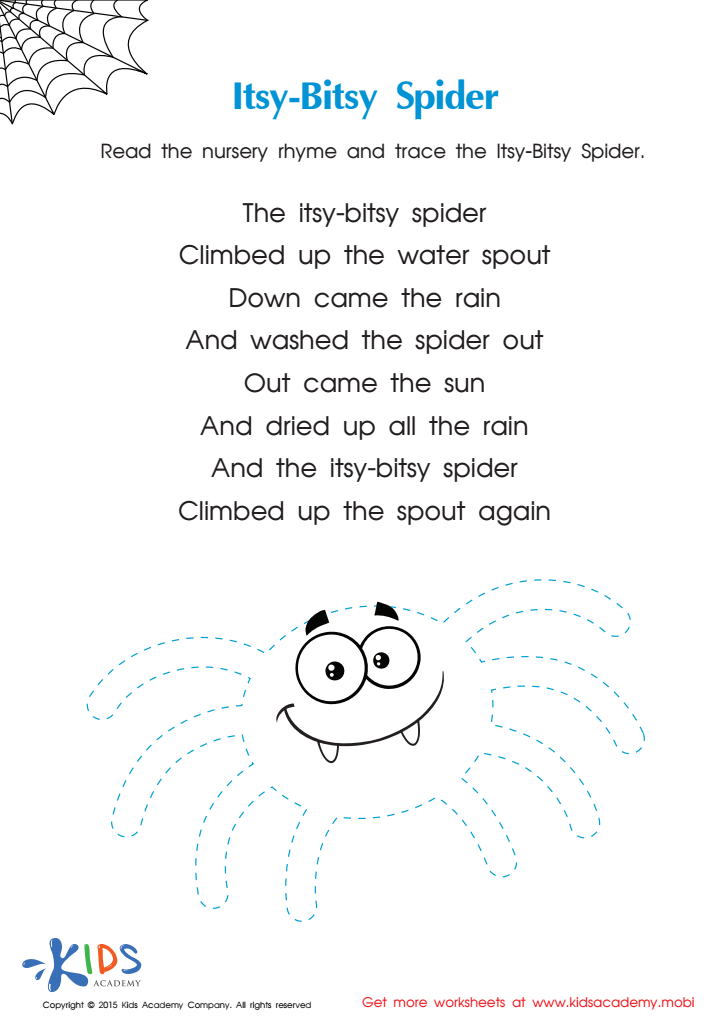Songs worksheets activities for Ages 3-8
9 filtered results
-
From - To
Discover the joy of learning through music with our engaging “Songs Worksheets Activities for Ages 3-8.” Designed to spark creativity and improve literacy skills, these worksheets combine fun activities with delightful songs to captivate young minds. Explore the importance of rhythm, lyrics, and melodies in fostering language development and enhancing memory. Each activity is tailored to suit different learning styles, encouraging children to sing, read, and interact with their favorite tunes. Whether at home or in the classroom, our resources provide an enriching experience that makes education enjoyable. Dive into the world of music and watch your child thrive!


Five Little Monkeys and Me Worksheet


Itsy Bitsy Spider and Me Worksheet


Baa Baa Black Sheep: Vocabulary Worksheet


Adding Up with Old MacDonald Worksheet


Nursery Rhymes: The Bingo Song Worksheet


Nursery Rhyme Match–Up Worksheet


The Five Little Monkeys Nursery Rhyme Worksheet


Itsy Bitsy Spider Nursery Rhyme PDF Worksheet


Nursery Rhymes: Twinkle Little Star Worksheet
Songs activities for children ages 3-8 are pivotal in nurturing their cognitive, social, and emotional development. Firstly, music engages young learners through rhythm and melody, making it easier for these concepts to be internalized. Songs serve as powerful tools for language acquisition, enhancing vocabulary, phonemic awareness, and memory skills, which are foundational for literacy.
Furthermore, music and song activities foster social skills, as children often participate in group singing or movement activities. These collaborative experiences encourage them to share, take turns, and develop empathy while forging connections with peers. Additionally, songs often incorporate simple narratives that teach important life lessons about kindness, sharing, and inclusivity.
Songs also support emotional expression. They provide a safe outlet for kids to convey feelings—whether happiness, sadness, or excitement—allowing them to develop emotional intelligence and regulation skills. Moreover, singing is an excellent vehicle for introducing concepts in a fun, engaging manner, from counting and alphabetization to more complex themes like nature or friendship.
In summary, songs activities create dynamic and multifaceted learning environments that engage children holistically, enhancing their growth and development. Parents and teachers play a crucial role in integrating these joyful activities into early education.

 Assign to My Students
Assign to My Students








.jpg)










